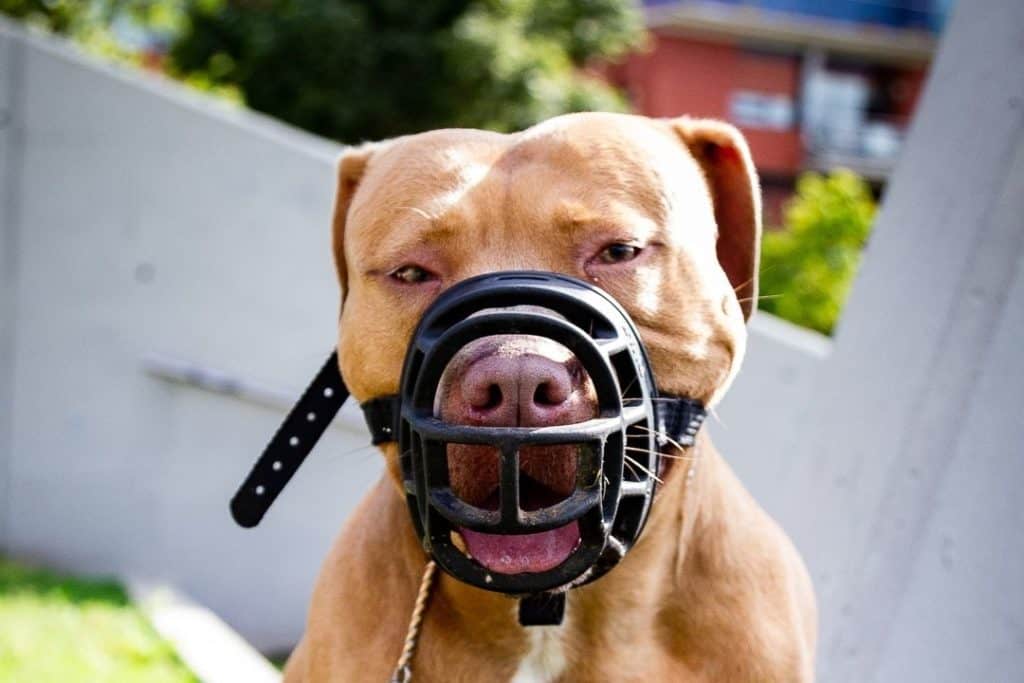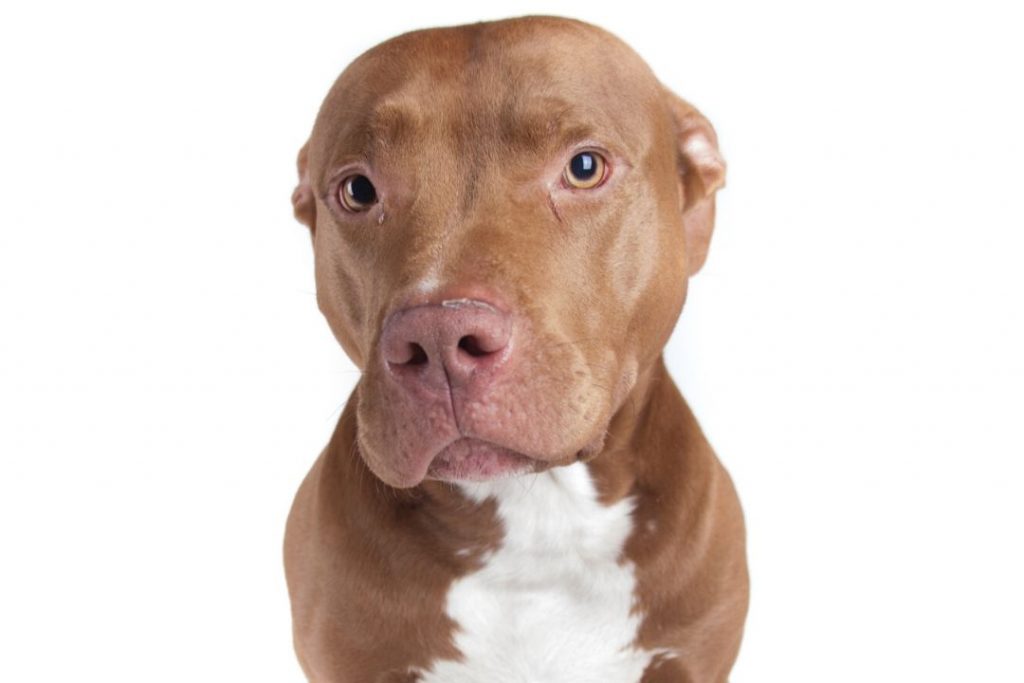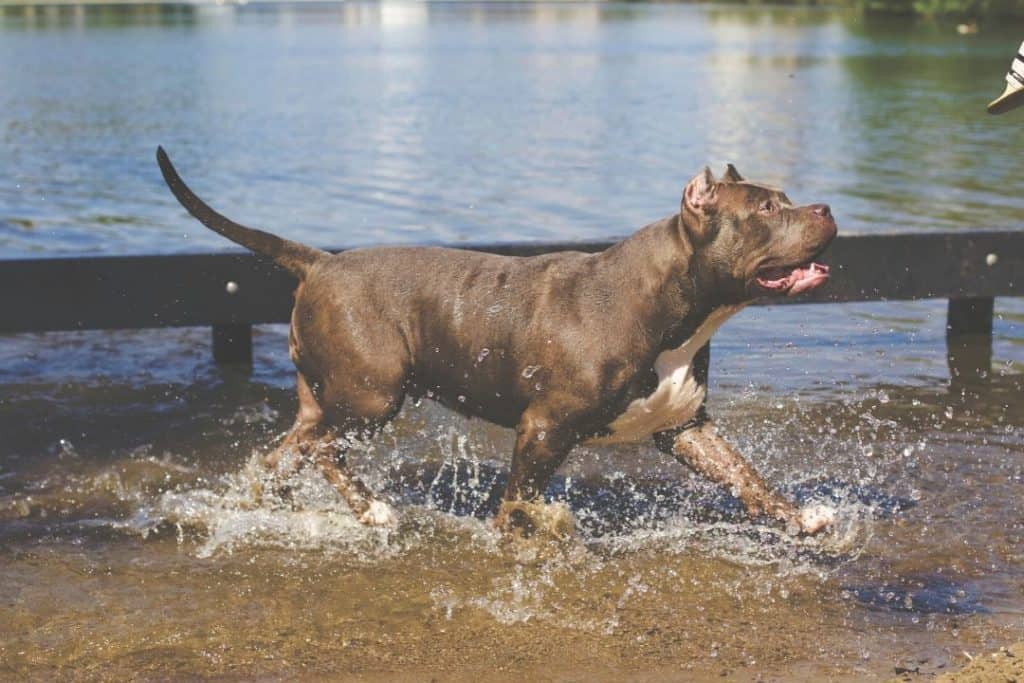This article may contain affiliate links, and I will be compensated if you make a purchase after clicking on my links (at no additional cost to you)
The American Pit Bull Terrier (APBT) has a bad reputation — dangerous, easily angered, prone to attack without warning — but why, exactly, is this tenacious, companionable breed seemingly always under fire?
American Pitbulls are considered dangerous due to their brutal history as bull-baiting dogs. They’re also commonly misidentified in the media, particularly in news stories regarding dog-related incidents. Irresponsible owners and breeding also give these misunderstood dogs a bad rap.
In this article, I’ll outline the reasons why so many people consider the American Pit Bull Terrier and other pitbull-type breeds to be dangerous. I’ll bust through the myths to get to the facts. Read on to learn more about this intelligent, powerful, and friendly breed.
American Pitbulls Were Bull-Baiting Dogs
Why people consider the American Pit Bull Terrier and other pitbull-type breeds to be dangerous likely has a lot to do with their history.
The American Pit Bull Terrier has a brutal past.
Descended from bull-baiting dogs on the British Isles, humans bred and trained these powerful dogs to bite and hold bulls and other large animals. Eventually, the practice of bull-baiting evolved into bullfighting, where dogs were forced into pits to fight large, powerful bulls. Spectators wagered bets on which animal would win.
Needless to say, this was a cruel, savage sport. Fortunately, it was outlawed in 1835 — but that wasn’t the end of the cruelty the American Pit Bull Terrier was subjected to. People instead turned to fighting their dogs against other dogs in dog fighting rings.
Selective Breeding for Dogfighting
As dogfighting became more popular — and lucrative, for those wagering — dogfighting enthusiasts took their best bull-baiting dogs (who were often slow yet powerful) and bred them with faster, agile terriers to create the ideal fighting dog. This process continued for decades to develop champion fighters.
Unfortunately, the process still goes on today in underground dogfighting and breeding rings.
The media is quick to jump on these stories that showcase the pitbull-type breeds in a negative light — and the general public often takes the information at face value even though many times the breed is misidentified (which I’ll discuss later).
Do Pitbulls Get Along with Other Dogs?
As I’ve recently mentioned, the American Pit Bull Terrier was originally bred to fight animals larger than itself, and eventually, its own canine counterparts. Despite this, many pitbull-type breeds, including the American Pit Bull Terrier, are known to live in peace with other dogs and animals.
The American Pit Bull Terrier and other pitbull-type breeds can get along with other dogs and pets. Due to their history, however, some may be more likely to be aggressive, unfriendly, or aloof toward their canine counterparts. Each dog is an individual, so this doesn’t apply to pit bulls as a whole.
Are Pitbulls Aggressive Towards Humans?
Back in the early days of bull-baiting, bullfighting, and dogfighting, any dog that showed combative behavior with humans was “culled,” or put to death — this was a trait that dog breeders did not want to be passed on to future fighters, considering that humans still had to handle the dogs inside and outside of the ring.
The pitbull-type breeds, including the American Pit Bull Terrier, were not originally bred to show aggression toward humans. Although they were bred as fearless fighters, it was rare for these canines to show hostility towards people. Today, pitbull-type breeds are often bred for companionship.
Most pitbull-type breeds are known for their affectionate nature and gentleness. This is a far car from their ruthless predecessors that were trained to fight to the death. It’s believed that pit bulls eventually moved on to become farm dogs, later moving indoors with the family.
It was when the pit bulls moved into the house that their people-loving personalities shined through, earning them the nickname of “nanny dogs,” thanks to their gentle nature and protective instincts around children.
American Pitbulls Are Often Misidentified
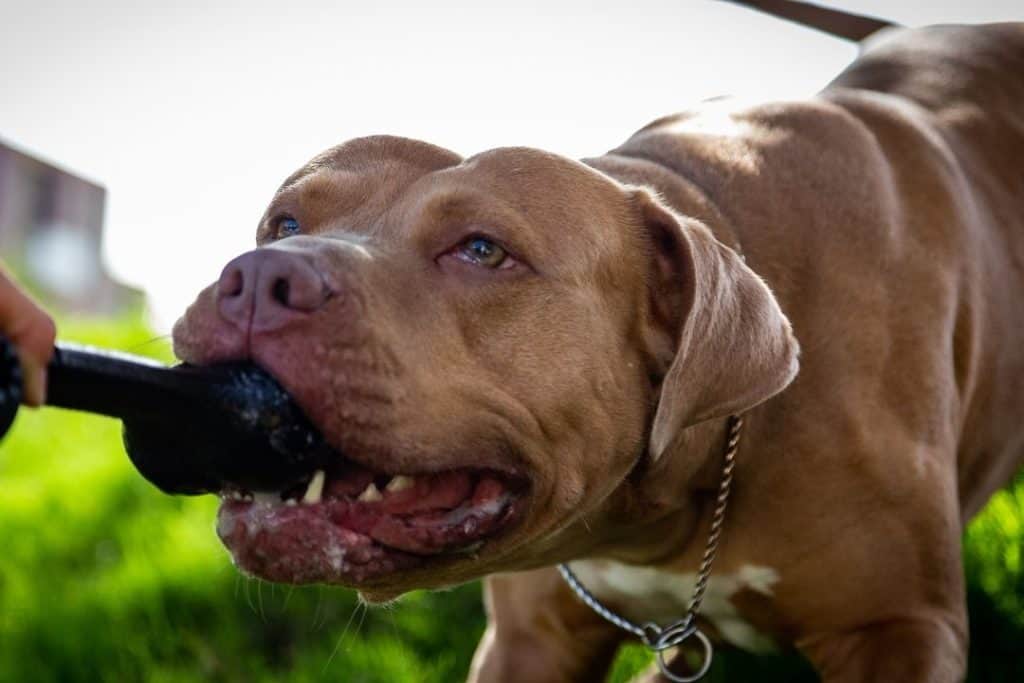
The general public tends to believe that pit bulls are a dog breed, but that is not the case. In fact, the term “pitbull” is an umbrella term used to describe several different bully breeds, with the American Pit Bull Terrier being the original.
There are three other breeds that are commonly lumped into the “pit bull” category, including:
- American Staffordshire Terrier
- Staffordshire Bull Terrier
- American Bully
In addition to common misidentification by the general public, the American Pit Bull Terrier has also been misidentified and counted in negative statistics on dog-related attacks. The Journal of the American Veterinary Association concluded that dog bite reports within the media include the misidentification of breed in over 40 percent of cases.
There is a Lot of Misinformation Surrounding American Pitbulls
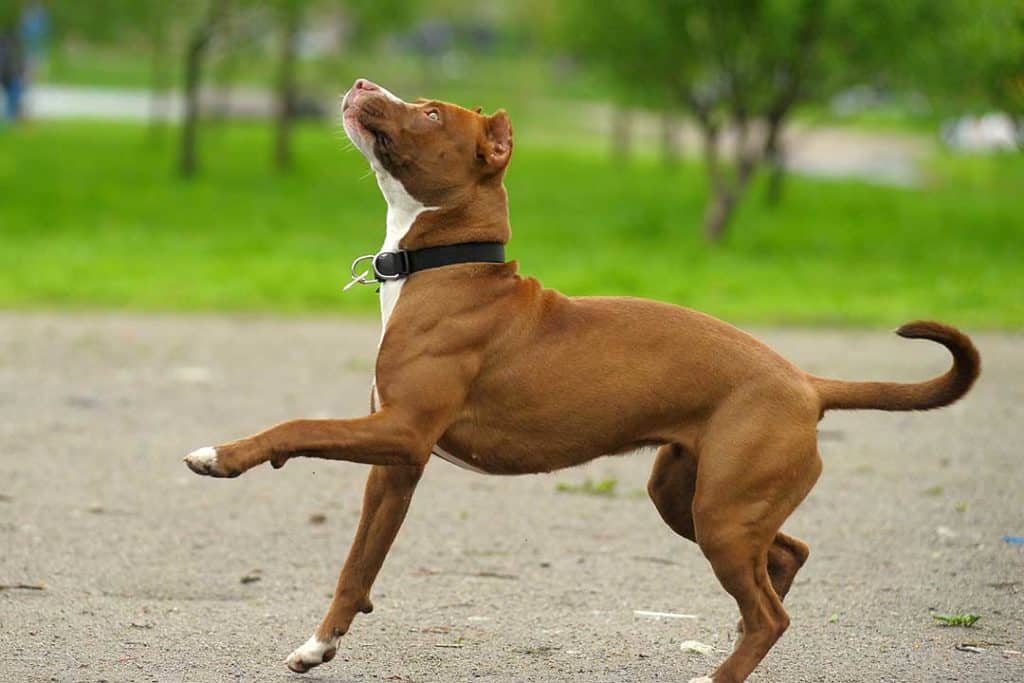
As the owner of an extra-large bully breed, I’m often met with stares, hostility, and negative remarks from misinformed strangers.
These dogs are like any other dog — loyal, loving, cuddly, and playful — yet the public and media like to portray them as vicious creatures capable of turning on their owner in the blink of an eye.
People have owned bully breeds for centuries, bringing them into their homes as companions and to look over their children as “nanny dogs.” So, why are so many people convinced that these companionable canines are ruthless, savage beasts?
The Media Insinuates That Pitbulls Have Ill-Tempers
As I mentioned early on in this post, the American Pit Bull Terrier was originally a bull-baiting dog. This likely contributes to the belief that these dogs are ill-tempered with a thirst for blood — but they’re quite the contrary.
To gauge canine breed tolerance, the American Temperament Test Society conducted a study, placing dogs in unfamiliar situations with strangers. The American Pit Bull Terrier passed the temperament test over 86 percent of the time, with pitbull-type breeds in general passing 82 percent of the tests. The general canine population as a whole had a passing score of only 77 percent.
Based on this study, American Pit Bull Terriers (and some of the other bully-type breeds) are more tolerant than dog breeds, including the Australian Shepherd, Beagle, Golden Retriever, and even the world’s smartest dog breed, the Border Collie.
People Believe That Other Breeds Make Better Family Dogs
This is simply untrue — there is no evidence to support the statement that other, non-legislated breeds make better family dogs than pitbull types in terms of aggression.
In fact, the Journal of Veterinary Behavior published a peer-reviewed study that found “no significant difference” in canine aggression between pitbull-type breeds and the control group (in this case, Golden Retrievers).
Additionally, the United States Centers for Disease Control and Prevention completed a study that concluded that 72 percent of fatalities associated with dog bites were attributed to non-pitbull breeds.
It’s important to note that all dog breeds are known to bite. All dog breeds have the potential to become aggressive. All dog breeds can have undesirable, unstable, unpredictable behaviors. There is not a single breed in the history of domesticated dogs that is immune from the possibility of aggression.
Behavioral Variation Is Hardly Considered

If you’ve ever owned the same breed of dog more than once in your life, you’re well aware that each dog, even if they’re the same breed, has their own unique characteristics, personalities, and behavioral traits.
This is the same with the American Pit Bull Terrier and other pitbull breeds.
Every dog is not the same — even if they come from the same litter. While it’s true, yes, that a dog’s genetic makeup could potentially enhance the likelihood of certain behaviors, it’s important to note that behavioral variation exists.
In other words, dogs are individuals. Just because a dog of a specific breed displays aggressive behavior doesn’t mean that all dogs of the same breed are aggressive.
High Number of Shelter Dogs
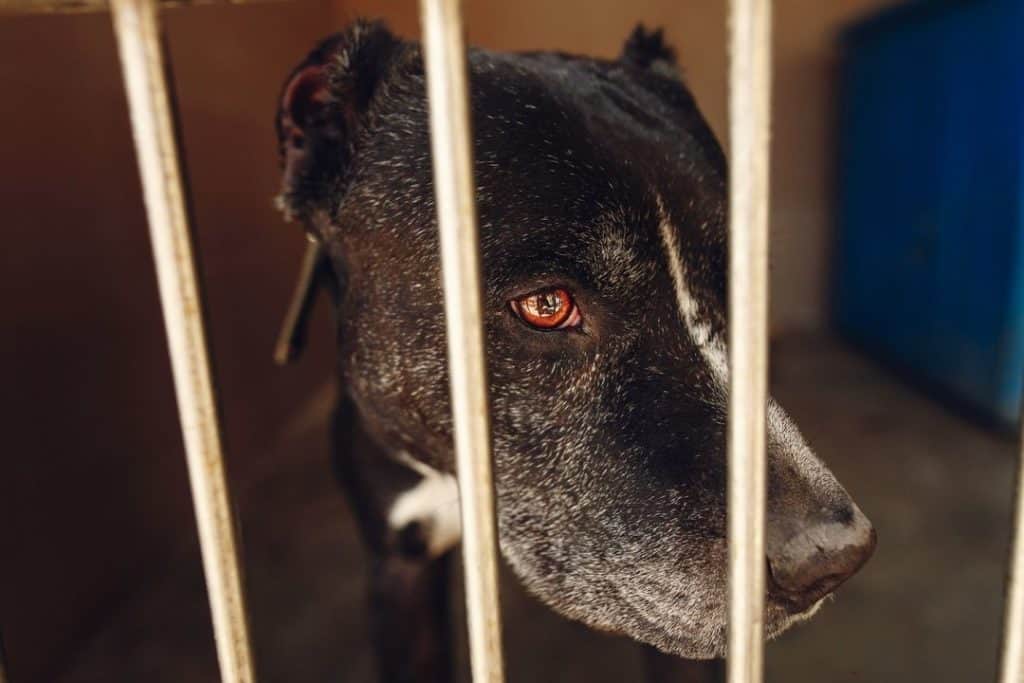
Walk into an animal shelter or rescue, and you’ll immediately notice that a large number of the dogs in need of homes are of the pitbull-type breeds.
Because of this, people immediately assume that these dogs are undesirable, poorly behaved, or unsuitable for families.
This belief is detrimental to the health and safety of these lovable canines.
Most pitbull-type breeds do not end up in shelters because they’re terrible dogs — it’s usually due to terrible owners.
The American Pit Bull Terrier and other pitbull breeds have become popular among negligent breeders, irresponsible dog owners (which we’ll discuss more in-depth in the next section), criminals, and those looking to make a profit.
Unfortunately, these types of owners do not usually care for their pets properly. Thus, the pit bulls that end up in shelters are more likely to be undersocialized, poorly trained, and many times, abused.
The owners abandon them once they realize that the dog doesn’t live up to their expectations, or no longer serves a purpose (i.e., too old to have puppies, injured and cannot fight, etc.).
They Often Fall into the Hands of Irresponsible Owners
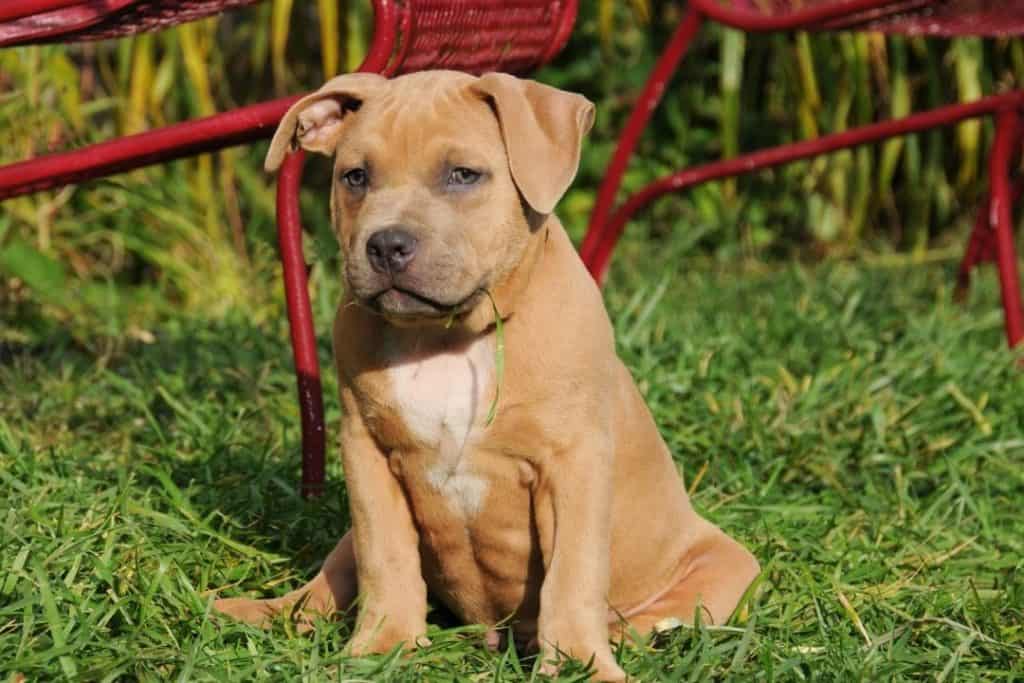
While I’m fully aware of the lovable, gentle, and affectionate nature of the pitbull-type breeds, I’m also informed enough to know that this breed isn’t the breed for everyone. Sure, they’re sweet, protective, and playful — but they’re also willful, confident, assertive, and stubborn as puppies.
These dogs have a naturally dominant personality, and, therefore, require a strong, experienced owner that’s willing to provide them with the proper training, socialization, nutrition, exercise, and veterinary care. Firm, consistent guidance is an absolute must with any headstrong breed.
Despite these warnings, people often jump right into owning a pitbull-type dog simply because they have an intimidating appearance. They often have little to no knowledge about the breed or how to train a dog, let alone an energetic, mighty dog like the American Pit Bull Terrier.
World’s Most Abused Dog
Sadly, PETA states that the pitbull is the world’s most abused dog.
Irresponsible owners acquire these dogs in the hopes of having a live burglar alarm, often to protect their criminal enterprises. These dogs often live in isolation, and know little about the love of a human. They’re often placed outside, confined by chains to a small area, day in and day out.
Most of the dogs that end up in shelters come from dog-fighting rings, horrible environments, or were dumped or abandoned. Many have obvious signs of abuse, from burn marks to broken bones. Some have had their ears mutilated, whereas many females are overbred and tossed to the side once they reach a certain age.
It’s a fact that abusive owners contribute to undesirable behaviors in canines. These dogs are victims, and should not be punished for developing these behaviors as a result of the negligence and irresponsibility of others.
American Pitbulls Are Susceptible to Irresponsible Breeding
Reputable breeders take time to closely observe each dog, considering their behavioral traits, health issues, and any other characteristics that may be passed to their young. This increases the likelihood that the offspring have desirable personalities, little health problems, and an overall positive demeanor.
Unfortunately, the vast majority of pitbull-type breeds today were not observed or vetted before breeding. In fact, most are bred randomly, and in the cases of strays, it’s often unknown the type and temperament of the dog that “fathered” the puppies.
Random breeding and overbreeding are a problem of epidemic proportions, especially when it comes to pitbull-type breeds. It causes birth defects, behavioral problems, and health issues, thus leading people to demonize the breed even more.
Some Breed Aggression Back Into Pitbulls
The pitbull’s imposing demeanor and intimidating appearance made them desirable among the young population who wanted a “hard” or “tough” dog to increase their street credibility. Unfortunately, this led the breed to fall into the hands of owners who wanted to exploit these dogs for their own personal gain.
Throughout their recorded history, pitbull-type breeds were never bred to be aggressive towards humans. Sadly, many of the irresponsible owners bred these traits back into the pit bulls to create a dog that was as aggressive as possible. This caused bizarre behavioral changes in the breed, including aggressive behavior without warning or provocation.
While many pitbull breeds were bred with aggression in mind by irresponsible, uneducated owners, the breed as a whole shouldn’t be punished for it. It is not, nor is it ever, the breed that is at fault.
In fact, when pitbull breeds are bred, trained, and socialized responsibly, they turn out to be loyal, intelligent, playful, and eager to please.
Conclusion
The American Pit Bull Terrier and other pitbull-type breeds aren’t inherently dangerous. With the proper training, socialization, and exercise from a young age, these canines make excellent family companions.
The ideal owner for an American Pit Bull terrier or pitbull-type breed is one that is active, calm, assertive, and willing and able to provide the dog with the care, training, and attention that it needs.
Educate yourself on these dogs, their temperament, and how pack hierarchies work for the best chances of success.

I created this blog to share my passion for bullies, and help current and future pitbull owners with things like diet and education.
Hope you find it useful, don’t hesitate to drop a comment on my articles!

